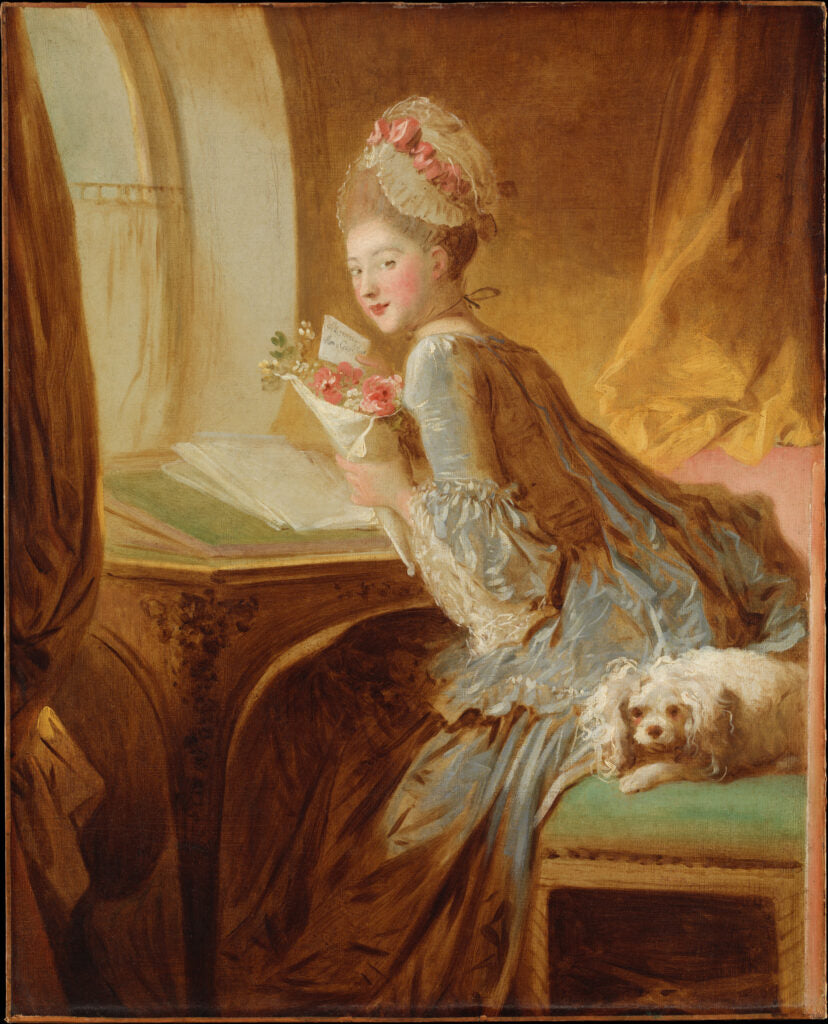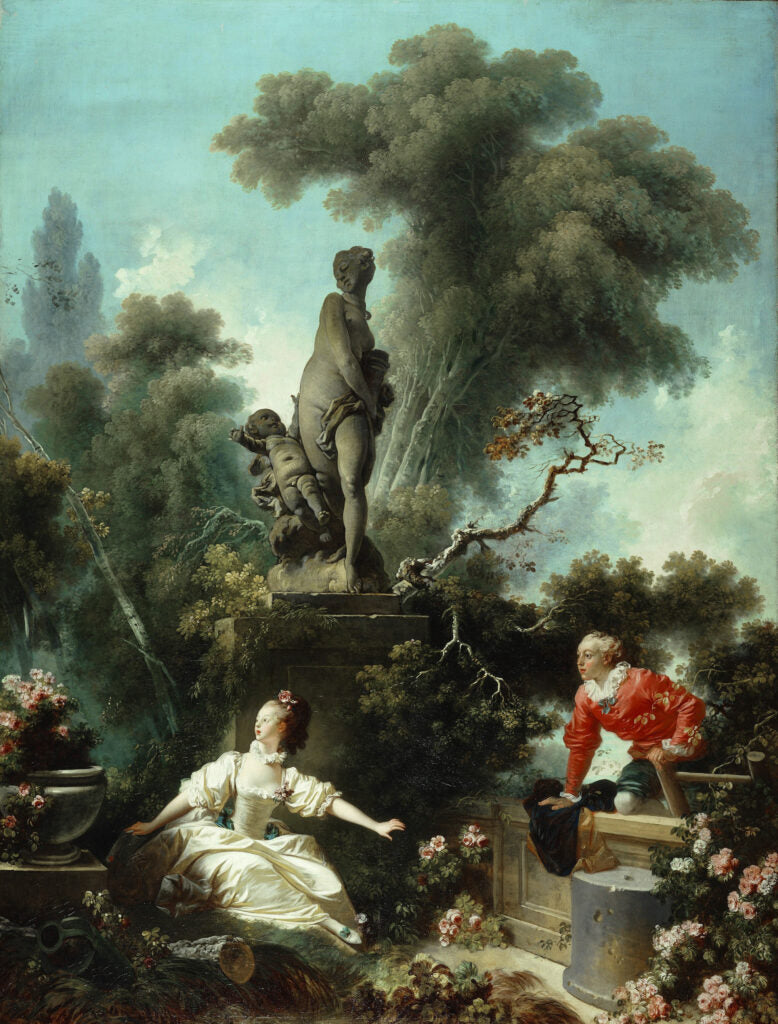To celebrate Valentine’s Day, we’re taking a look at one of the greatest painters of romantic love: Jean-Honoré Fragonard. Born in the southern French city of Grasse in 1732, Fragonard studied under renowned artists Jean-Baptiste-Siméon Chardin and François Boucher. He was most active during the waning years of the ancien régime, as the French monarchy was known before the French Revolution. Fragonard is one of the major figures of the Rococo art movement, which emphasized ornament, serpentine curves, and scenes of pleasure, amusement, and love. Read on to learn more about this artist and his vision of romance.
Fragonard’s Early Career

Fragonard’s early work reflects his training in Boucher’s studio. This painting from the beginning of his career in the 1750s depicts the myth of the goddess Diana and the shepherd Endymion. Having fallen in love with Endymion, Diana would visit him at night. Details vary depending on the telling, but all agree that Endymion was cast into an eternal sleep that would keep him forever young. In Fragonard’s version of the story, Diana stares longingly at Endymion as Cupid aims an arrow at him. The mythological subject matter, color palette, and poses of the figures recall Boucher’s paintings.
Fragonard’s Style

Fragonard became best known for genre paintings, i.e., scenes of everyday life, but his are charged with romantic and erotic themes. This early work was completed while he was studying in Italy. Fragonard has depicted the results of a card game (if you look closely, you can see the woman on the left holding playing cards). The man, presumably the winner, prepares to celebrate his victory with a kiss. The artist concentrates light on the figures as if they’re performers on a stage, casting the background into darkness and heightening the drama of the scene. The smooth, satin-like finish of the work and its sumptuous, saturated colors recall the traditions of northern European painting.

A highly skilled painter, Fragonard didn’t limit himself to one technique. In his work “The Stolen Kiss,” he opted for a very finished handling of paint, with no wayward brushstrokes visible. By contrast, the painting “The Love Letter,” has a more “incomplete” look. Rather than portray objects in detail, as he does with the card players’ white tablecloth, here he loosely sketches the outlines of the window and desk. The effect is more raw and immediate. This technique allows Fragonard to study the effects of light spilling into the room and the excitement of the figure as she clutches flowers and a note to her chest, looking slyly over her shoulder. Is she guarding a secret?
The Progress of Love

Like Fragonard’s famous work “The Swing,” the series of paintings known as the Progress of Love depicts young nobles in a lush garden setting. Madame du Barry, mistress of King Louis XV, originally commissioned a suite of four large paintings to decorate the pavilion of her château at Louveciennes but rejected the completed set. The series tells the story of a love affair. The second painting, known as “The Meeting,” depicts a clandestine rendez-vous between two lovers. A man climbs over the garden wall while a woman glances to the left to make sure no one is watching their tryst. A statue of Venus and Cupid symbolizes love and presides over the illicit rendez-vous. The scene is framed by an explosion of delicate flowers, grasping branches, and frothy leaves
The Bolt

In his masterpiece “The Bolt,” now in the collection of the Louvre Museum, Fragonard is at the height of his powers. This painting captures the intensity of romance. Holding his lover close, a man delicately pushes the deadbolt of the door closed to ensure no interlopers disturb their privacy. Fragonard’s skilled composition directs the viewer’s eye through the painting, starting at the lock, going down the angle of the man’s arm and along the pleats of the woman’s dress and the bed, and finally coming to rest on an apple in the bottom left corner of the canvas. This apple, a reference to the fall from the Garden of Eden, symbolizes sin, while the billowing red curtains (a color fitting for Valentine’s Day) suggest passion.
Fragonard’s Legacy
The Rococo style fell out of favor in the last quarter of the 18th century as Neoclassicism gained prominence, and after the French Revolution began, Fragonard went into exile in his hometown of Grasse. After his death, Fragonard was largely forgotten, but his reputation recovered by the late 19th century and his work served as a source of inspiration for the Impressionists. Today, he’s recognized as one of the most skilled painters of romance in the Western tradition. If you’re looking for a way to celebrate Valentine’s Day, consider taking a special someone on a tour of the National Gallery of Art, which has one of the most impressive collections of Fragonard’s work in the United States.
